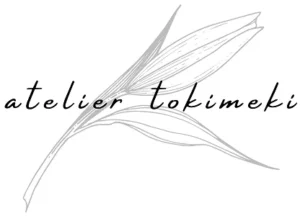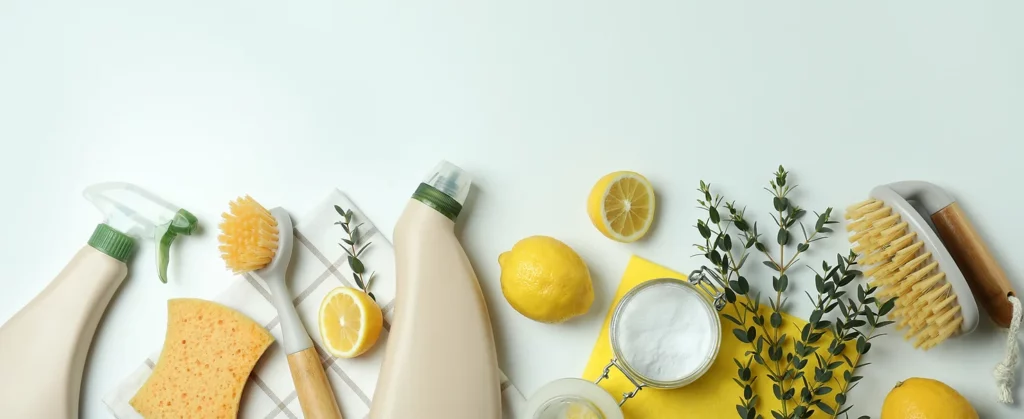Introduction
Have you ever noticed how taking care of your home makes you feel better physically and mentally?
In fact, your home is an extension of your energy field. By decluttering and cleaning your external environment, you do the same for your entire being.
That’s why, during transitional periods like the shift from winter to spring, we feel the urge to clean and tidy our home. However, these two activities are completely different efforts with distinct goals. Both contribute to a sense of well-being in your space, but for different reasons.
To create a living space that is both aesthetically pleasing and enjoyable, it’s important to understand the 5 key differences between cleaning and tidying up :
- The objective: removing dirt vs. assigning a place for each item
- What you tackle: dirt vs. clutter
- The impact: external vs. internal
- Who can do it: anyone vs. only you
- The frequency: regularly vs. once
To put it simply, by tidying up, we create a space where energy flows freely; with cleaning, we maintain the cleanliness and freshness of that space..
Clarifying this distinction allows us to dedicate the necessary time and effort to each activity. It makes us more effective in learning, teaching, and execution of each one.
The 5 differences between cleaning and tidying
1. The objective
- Cleaning : The primary goal of cleaning is to remove dirt and dust to maintain a clean and hygienic living space. Tasks include vacuuming, dusting, mopping, and cleaning and disinfecting surfaces.
- Tidying : At its core, the goal of tidying is to create a harmonious living space by selecting the items you want to keep and then assigning a designated place for each item.
2. What you tackle
- Cleaning : Cleaning targets the physical removal of dirt. It is a straightforward process with immediate and visible results.
- Tidying : Tidying focusses on decluttering and optimising storage. This involves sorting items, getting rid of those that are no longer needed, and organising the remaining items in a visible, accessible, and aesthetically pleasing manner. The simplicity that comes with decluttering frees up both physical and mental space.
3. The impact
- Cleaning : The effect of cleaning is immediately visible in the external environment. However, dirt returns as you use the space and needs to be addressed regularly.
- Tidying : Sorting and organising often result in an impressive transformation of your space, one that is easy to maintain. However, the impact goes far beyond before-and-after photos. By learning to identify the items that inspire, tokimeki, or the spark of joy, you understand what is truly important to you. You experience a deep shift in mindset, setting a high standard for any new item you bring into your home. You also begin to consciously choose joy in other aspects of your life: relationships, career, commitments, habits, thoughts... Does it spark joy or tokimeki ?
4. The frequency
- Cleaning : Cleaning is an ongoing maintenance activity that needs to be performed regularly. Good habits prevent dirt from accumulating and contribute to the longevity of your home and belongings.
- Tidying : According to Marie Kondo’s (KonMari) method, the "tidying festival" is a one-time event where you review all your belongings. There is a clear end point: when you have decided whether to keep or discard each item you own. Although it may seem daunting, the KonMari Method is designed to make it as simple as possible. For example, you approach items by category rather than by location to avoid merely moving them from one spot to another; you start with clothes because you can feel the tokimeki more easily with them. One of the most powerful aspects of a tidying festival is that you gain the ability to "reset" your home, meaning you put everything back in its place in a flash. After all, your home is meant to be lived in, so the goal is to have a home that's easy to tidy, not always tidy.
5. Who can do it
- Cleaning : Unlike tidying, which is inherently personal, cleaning tasks can be performed by anyone with the necessary tools and equipment. Professional cleaning services offer a convenient option for those seeking help with routine cleaning or specialised cleaning projects. Outsourcing these tasks can free up time and energy for other activities, making it a practical solution for busy families.
- Tidying : Tidying is a deeply personal endeavor that requires active participation and ownership of the process from the individual. While the support of a specialist is often valuable for applying the approach effectively and staying on track, the actual process of evaluating items and determining what to keep ultimately falls to the individual. Tidying is an opportunity for self-discovery and introspection, allowing you to reconnect with your values, priorities, and aspirations… with what brings you joy. No tidying consultant, no matter how experienced, can make decisions for you based on your personal sense of tokimeki.
3 tips for cleaning and tidying more easily
Cleaning and tidying up require time and energy, and it can be challenging to find motivation. Here are three tips to make things a bit easier :
- Gratitude : Think of cleaning and tidying as acts of caring for your home and belongings. It’s a way to show appreciation for the inanimate yet valuable objects that accompany you daily.
- Focus on the goal : Whether it’s a clean house or greater clarity in your life, think about your priorities and how cleaning and/or tidying can help you achieve them.
- Seek support : There's no need to do it all alone! Seek help to keep your home (and yourself) happy.
Conclusion
Although cleaning and tidying serve distinct purposes, they are interconnected, and both are necessary for a harmonious home. Tidying makes cleaning more effective. Less clutter means fewer items that collect dust or need to be moved to clean the surface underneath. Imagine vacuuming without having to clear the floor first. Cleaning is about taking care of your home and belongings, which you’ll have reconnected with through tidying.
Note that both cleaning and tidying are skills. You can learn how to tidy, just as you can learn to clean. Cleaning products come with usage instructions, but everyday objects don’t come with storage instructions. All the more reason to seek help to learn how to tidy.

